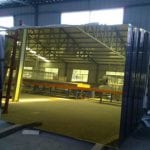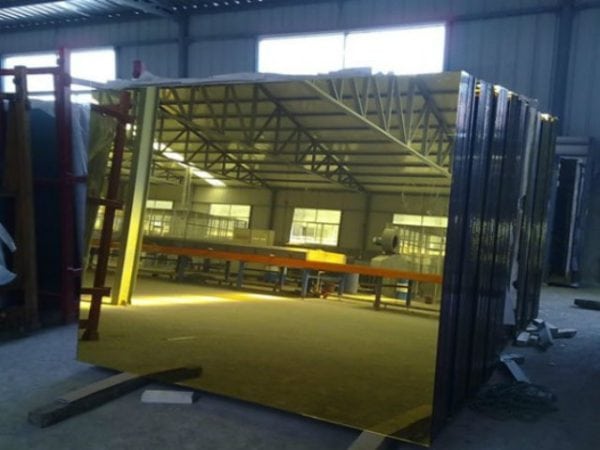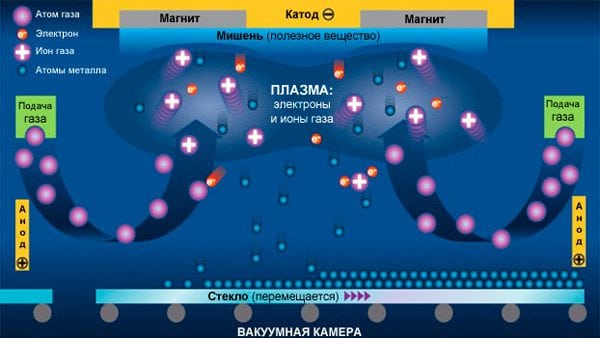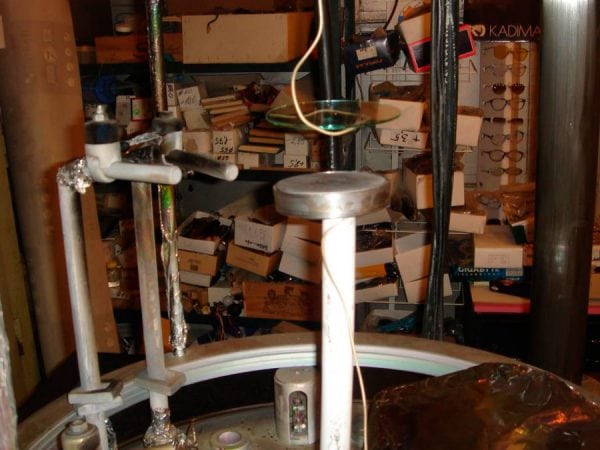The deposition of metals and their oxides on glass makes it possible to improve the quality of glass, as well as give it some additional useful properties. Surely many of us noticed “one-way” mirrors in films. With their help, those who are outside the room can observe those inside. The latter, in turn, do not see those who are outside, and can only see their reflection in such glass. Such glasses exist in reality and are most often used not for espionage, but to protect various objects from prying eyes, and mirror spraying is used for their manufacture.
Spray technology
The principle of action of this effect is based on the fact that a darkened room is very difficult to consider against a background of brighter reflection. To date, there are no translucent mirrors that would have the ability to transmit light in one direction and not pass in the other.
In order to make such glass, people began to use special methods to create products with a one-sided effect. So, ordinary mirrors are glasses, on the back surface of which a very dense and thick reflective coating is applied. Mirrors with one-sided transparency are made by analogy, but a thinner and more light-transmitting coating layer is used.
As an alternative, a mirror film is often used today, which is applied to the surface of the product. Such a mirror film can be easily applied to an already finished product.
There are two main spraying methods:
- pyrolytic method (carried out at the manufacturing stage);
- vacuum-type spraying (applied to finished products using special type of equipment).
Today there are several varieties of vacuum deposition, the most popular, among which are:
- high-speed magnetron;
- ion-plasma.
Magnetron sputtering
This type of processing involves applying various types of metals and their compounds to the glass surface using the magnetron sputtering method. Products are processed in confined spaces. Such processing is carried out at the molecular level, so that products receive high quality and performance characteristics.
To achieve the desired effect, gases of various types are often used - oxygen, nitrogen or argon. During the reaction, metal layers form on the surface of the product. This provides the ability to produce glass with various desired characteristics.
Glasses, tinted by using magnetron sputtering technology, have a number of advantages:
- excellent reflective characteristics;
- excellent heat reflection characteristics;
- due to the ability to simulate the thickness of the applied metal layer, manufacturers can produce glass with the necessary characteristics of light reflection and light transmission;
- This type of coating can even be used for processing patterned glass.
- relatively low and affordable cost.
Ion plasma spraying
To apply ion-plasma spraying, it is necessary to place the product in a vacuum.In an enclosed space there is an inert gas, cathodes with a negative charge and a metal coating, a positively charged anode, and also a bearing with a triple insert.
The spraying layer during processing is applied precisely to the bearing. The plasma method makes it possible to apply alloys of a wide variety of metals, as well as their compounds, such as titanium, silver, aluminum, nickel, chromium, etc. to the surface of products.
The quality of the applied coatings will always depend directly on the quality of the surface. In such a case, even such moments as roughness or texture of the workpiece, the quality of preparation of the surface itself and the culture of production are taken into account. It can be noted that the rather stringent requirements for surface preparation, as well as the cost of the equipment used, can be called a constraining factor that affects the distribution of this method.
Special attention should be paid to sapphire glass. In the watch industry, this technology is often used to create dials. Mineral glass is used as a material for production, which, in turn, is artificially grown from silicon oxide crystals.
For lovers of particularly durable glass, craftsmen from Switzerland have learned to create glass even from artificial sapphires. Such products are characterized by high strength and no less high cost. The solution between strength and cost was found after the invention of mineral-type glass, on which sapphire deposition was applied. This type of spraying has the strength of sapphire and the cost of conventional mineral. The only drawback is the fast abrasion period.
Technologies make it possible to apply high-quality tinting, low-emission, self-cleaning coatings to the glass surface, which can have the effectiveness of any given degree.
Coatings containing oxides are more durable than metal coatings. They are more resistant to external influences and are distinguished by chemical affinity with glass.









Hello. Is it possible to spray on faceted stones to change color?
And how to remove the protective coating on the glass (it is now blue / mirror, you need to make it transparent)